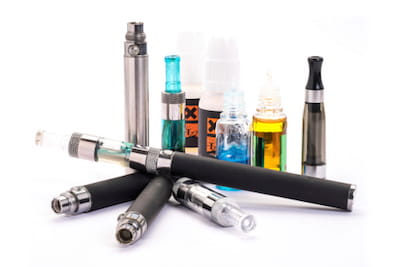What to tell your kids about vaping
One of the most challenging aspects of raising a teen or pre-teen is this: the environment in which they are growing up looks dramatically different than it did when we, their parents, were young.
I’m not one of those glass-is-half-empty parents who believes that our children have missed out on the golden age of growing up, but it’s true that some of the issues my children will face in adolescence are things I don’t know much about. That realization hit me hard recently as I sat across the table from a friend’s college-age son as he talked about his annoyance when he goes to a college party and someone vapes in his face.
Is that the correct terminology to describe someone blowing smoke from an e-cigarette in your face? I honestly have no idea, and that is entirely my point. Vaping wasn’t a thing when I was a teenager; e-cigarettes hadn’t been invented yet.
And yet, one in six high school students last year reported using e-cigarettes within the last 30 days. Although I’ve never been in close proximity to anyone smoking an e-cigarette, it’s likely my children will.
Bridging the gap when you feel out of touch
 It is a human tendency to relate to others through our own experiences, and parents often try to make sense of a teenager’s world by relating it to their own adolescence. After all, we were all teenagers once upon a time, right? But rather than trying to fit today’s teenager into our memories of the past, our kids would be better served by a sincere willingness on our part to understand the world in which they are growing up.
It is a human tendency to relate to others through our own experiences, and parents often try to make sense of a teenager’s world by relating it to their own adolescence. After all, we were all teenagers once upon a time, right? But rather than trying to fit today’s teenager into our memories of the past, our kids would be better served by a sincere willingness on our part to understand the world in which they are growing up.
There’s a tried and true way to do just that: listen and learn.
Become a student of the environment in which your children live. Ask questions about what their friends are doing, what they experience at school, how they feel about what they’ve seen. If all you get from your kids is an eye roll and a “I dunno,” there are other ways to learn.
Encourage them to invite their friends over to your house to hang out; you’d be surprised what you learn about your kids just by observing how they interact with their friends. Teachers can offer great insight about teens, too, as they are able to observe them in a different environment than you typically do.
When you encounter something that you don’t understand, research the topic to be sure you know what it is your child is into.
When to talk
As with all discussions about risky behaviors, conversations on e-cigarettes should take place well before the possibility of exposure to them. For most parents, this is much earlier than one might think. The right time to discuss sex, alcohol, drug abuse as well as e-cigarettes usually occurs in the middle school years. In some situations, it may be appropriate in the later elementary school years. (I cringe as I write that, but it is true.)
What to say

E-cigarettes are a hard topic to discuss because there is so much misinformation and false advertising associated with them. Most kids know that smoking cigarettes is bad for them, but they’ve been told by their peers and advertisers alike that e-cigarettes are much safer. This simply isn’t true.
Start by asking open-ended questions, and this might happen naturally if you see a kid standing at the bus stop smoking or watch something similar on television. Ascertain what your kid’s thoughts and feelings are on e-cigarettes, what they know and what they’ve heard.
Then take the opportunity to correct those assumptions with factual information:
- E-cigarettes are now the most common method for adolescents to use tobacco products, with many kids using e-cigarettes along with regular cigarettes.
- E-cigarettes are not a safe alternative to traditional cigarettes. They contain nicotine and other cancer-causing ingredients, making them dangerous to a person’s health and very addictive. This is especially true for teenagers, whose brains are still growing.
- Kids may assume that because e-cigarettes come in fun flavors such as vanilla and bubblegum that it’s an okay thing to do. Tell your kids not to be fooled; even if it smells good and tastes good, it is still harmful to their body.
- Teens who use e-cigarettes are more likely to become cigarette smokers later on. They also tend to choose other risky behaviors as well, including alcohol and drug use.
Let your kids know that you do not want them to smoke regular cigarettes or e-cigarettes. Be clear about your desire to protect their health and well-being.
Often one of the driving forces behind a teen’s desire to experiment with risky behaviors is simply due to curiosity. By opening up the channels of communication, you are able to help satisfy their curiosity while dispelling those myths and rumors that make it desirable to try to risky behavior in the first place.
If you’d like to learn more about e-cigarettes, see the U.S. Surgeon General’s report on e-cigarettes or visit the Centers for Disease Control and Prevention.







